This post may contain affiliate links. Please read our policy page.
I believe embracing a minimalist lifestyle in your dining room can create a peaceful retreat. Start by incorporating reclaimed materials, like barnwood or vintage furniture, to add unique character and charm. Focus on a functional layout that promotes connection around the table. Stick with a neutral color palette and incorporate natural elements to enhance serenity. Each piece should have purpose, guiding your design choices. By following these principles, you can transform your space into a sanctuary, and there’s more to discover.
Understanding Minimalism in Home Design
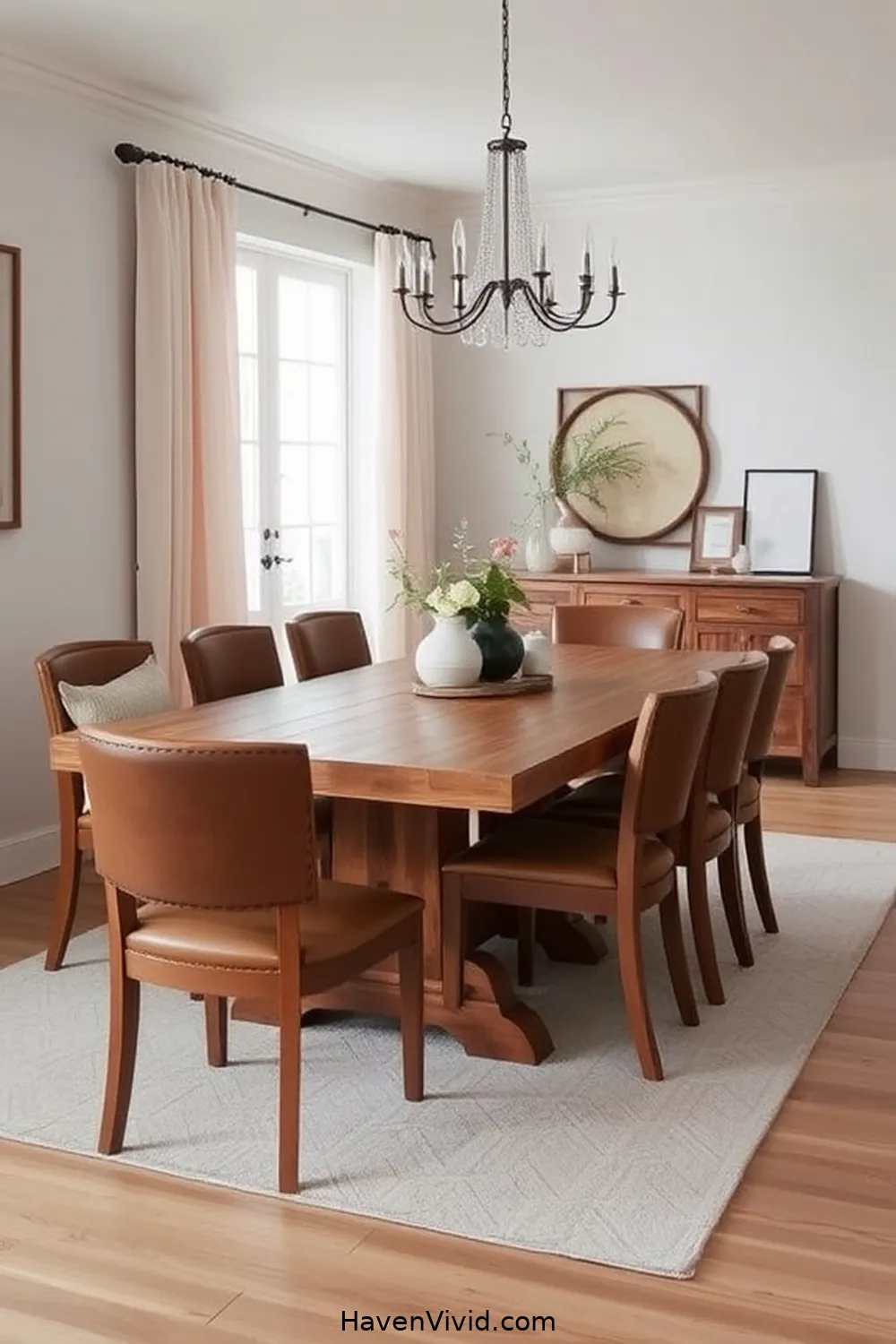
When I first encountered minimalism in home design, it struck me as a rejuvenating change amidst the chaos of modern living. The simplicity and elegance of clean lines and uncluttered spaces felt liberating.
I realized that minimalism isn’t just about having less; it’s about creating a purposeful environment. Each piece in a minimalist room serves a function, contributing to an overall sense of calm.
Minimalism transcends mere simplicity; it crafts a purposeful space where each element fosters tranquility and connection.
I began to appreciate the beauty in neutral colors and natural textures, which invite peace and serenity into our daily lives. By focusing on quality over quantity, I found that my dining room transformed into a sanctuary for connection and creativity.
Embracing minimalism has truly changed how I experience my home and the moments shared within it.
Benefits of Using Reclaimed Materials
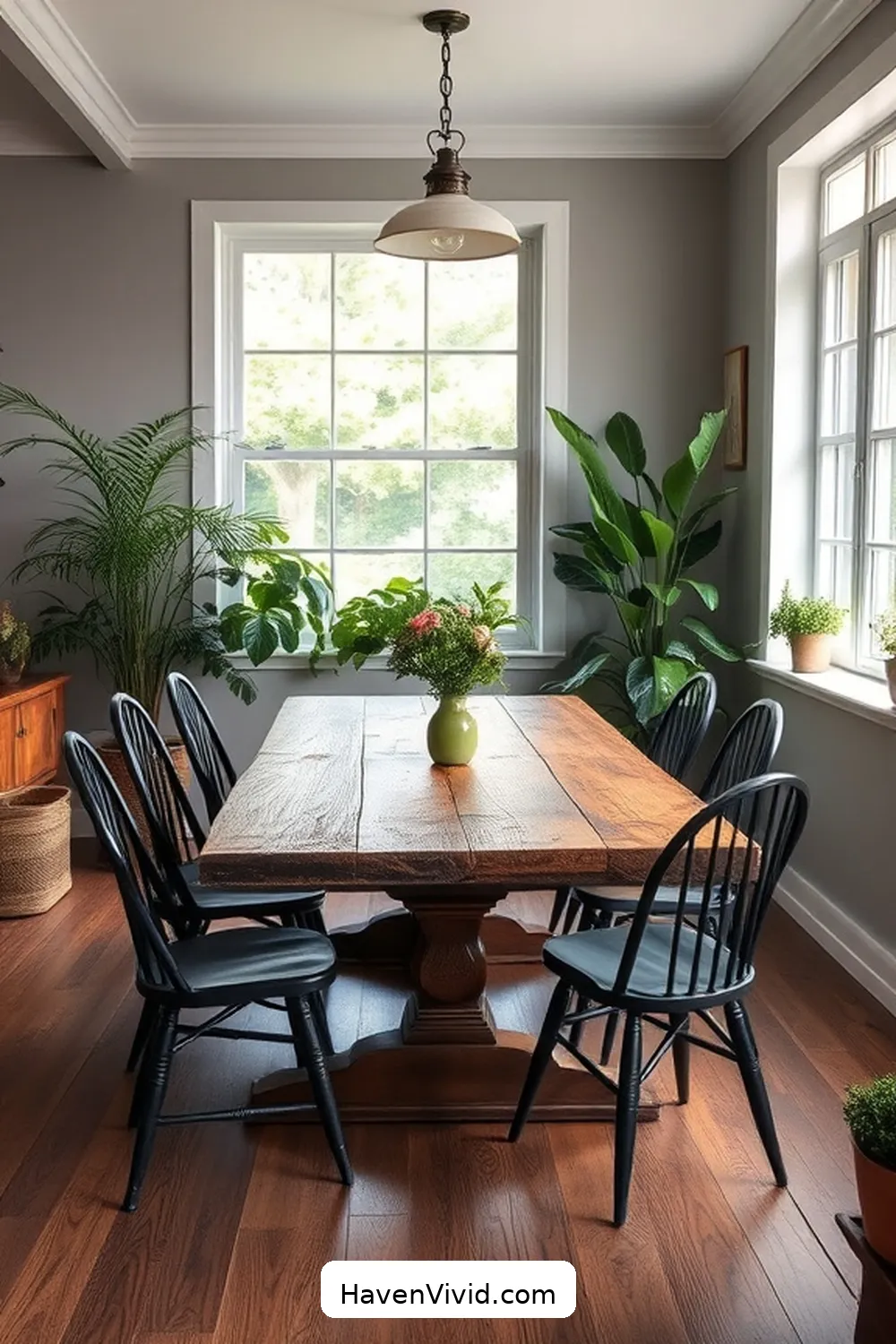
Although it may seem unconventional, incorporating reclaimed materials into my dining room has truly enhanced its character and charm. Each piece tells a story, bringing a sense of history that new materials simply can’t replicate.
I love how the unique textures and colors add warmth and depth, transforming the space into a cozy gathering spot. Plus, using reclaimed wood is an eco-friendly choice; it reduces waste and minimizes my carbon footprint.
I’ve found that these materials often have a durability that outlasts newer options. Not only do they elevate the aesthetic, but they also spark conversations, making my dining room feel inviting and personal.
Embracing reclaimed materials has genuinely enriched my minimalist lifestyle.
Selecting the Right Reclaimed Wood
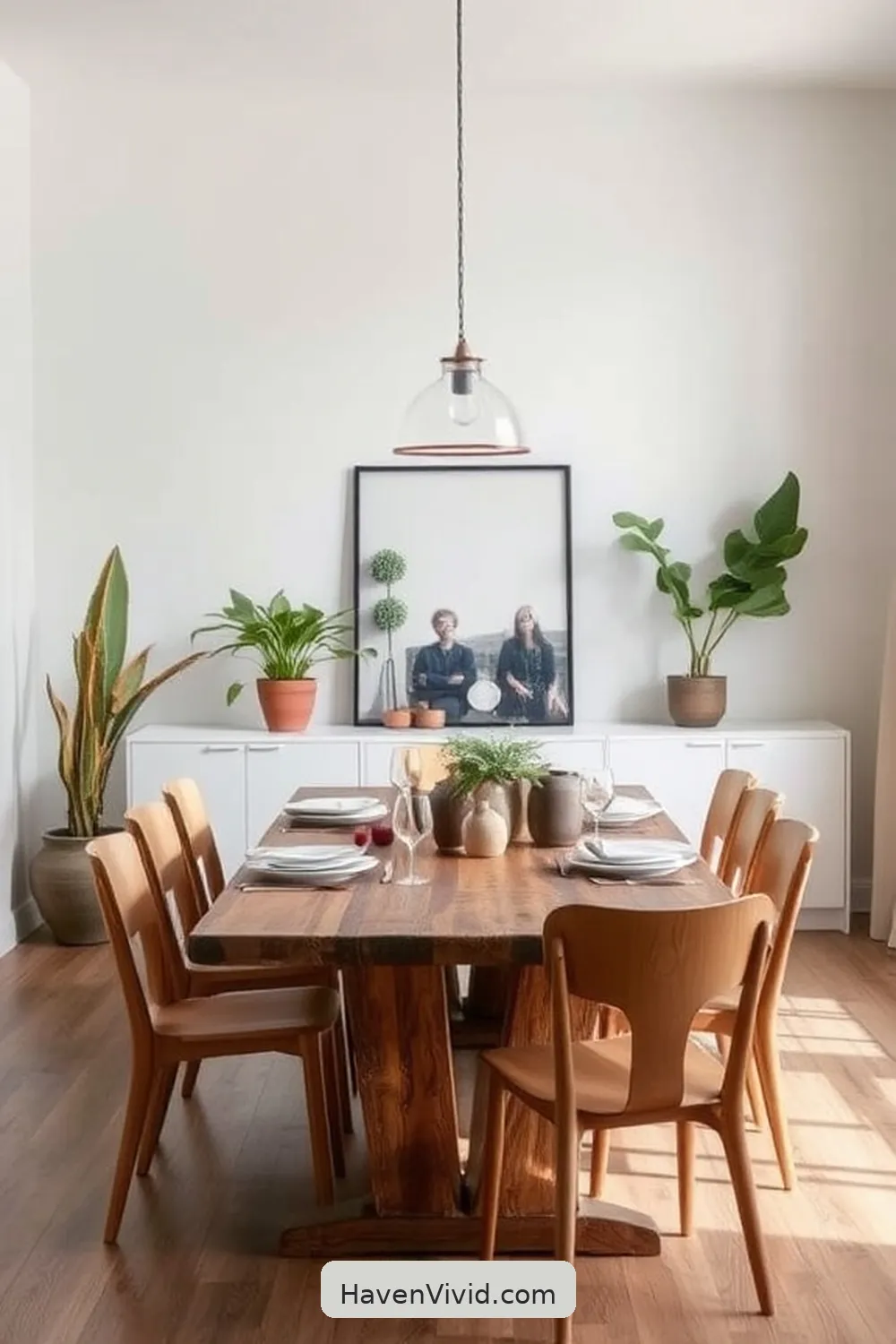
Choosing the right reclaimed wood can truly elevate your dining room’s design. I love exploring different types of reclaimed wood, each with its unique story and character. When selecting wood, consider factors like durability, grain patterns, and color. Here’s a quick comparison to help you out:
| Type of Wood | Characteristics |
|---|---|
| Barnwood | Rustic, weathered texture |
| Pallet Wood | Affordable, versatile |
| Teak | Durable, rich color |
| Oak | Strong, classic grain |
| Pine | Light, easy to work with |
I find that the right wood not only adds aesthetic appeal but also creates a warm, inviting atmosphere. Don’t rush; let your instincts guide you to the perfect reclaimed piece.
Choosing Vintage Furniture for a Timeless Look

To create a truly timeless dining room, incorporating vintage furniture can make all the difference.
I’ve found that each piece tells a story, bringing character and warmth to the space. When choosing vintage items, I look for well-crafted tables and chairs that showcase unique details—think turned legs or intricate carvings. These elements add charm and invite conversation.
I also pay attention to materials; solid wood and metal pieces not only last but also age beautifully with time. Mixing styles can create an eclectic feel, so don’t hesitate to pair a rustic table with mid-century chairs.
Recommended Items
Here are our recommended products and equipment to help you create your minimalist dining room—feel free to explore!
Upcycling Decor: Creative Ideas for Your Dining Room
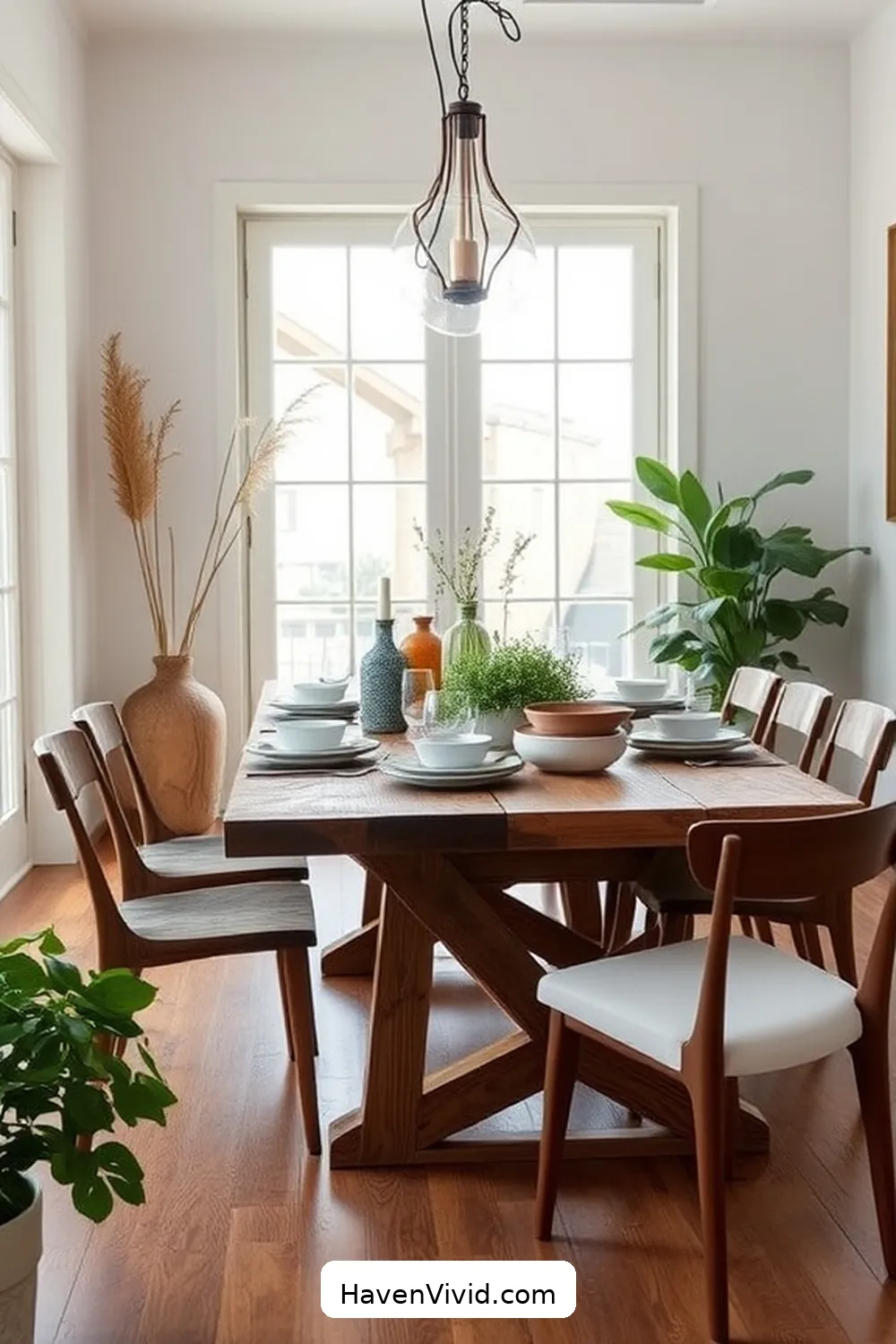
Upcycling decor in your dining room can breathe new life into forgotten items, transforming them into unique conversation starters.
Transforming forgotten items into upcycled decor can add charm and unique conversation starters to your dining room.
I’ve discovered so many creative ways to repurpose materials, each adding a touch of charm and sustainability. Here are a few ideas to inspire you:
- Mason Jars: Use them as candle holders or vases, showcasing fresh flowers or herbs.
- Old Wooden Crates: Stack them for a rustic bookshelf or a stylish display for dishes.
- Vintage Silverware: Craft them into hooks for hanging aprons or towels.
- Wine Bottles: Paint or wrap them in twine for chic table centerpieces.
- An Old Ladder: Lean it against the wall to showcase decorative plates or plants.
Each piece tells a story and brings warmth to your dining space!
Designing a Functional Layout
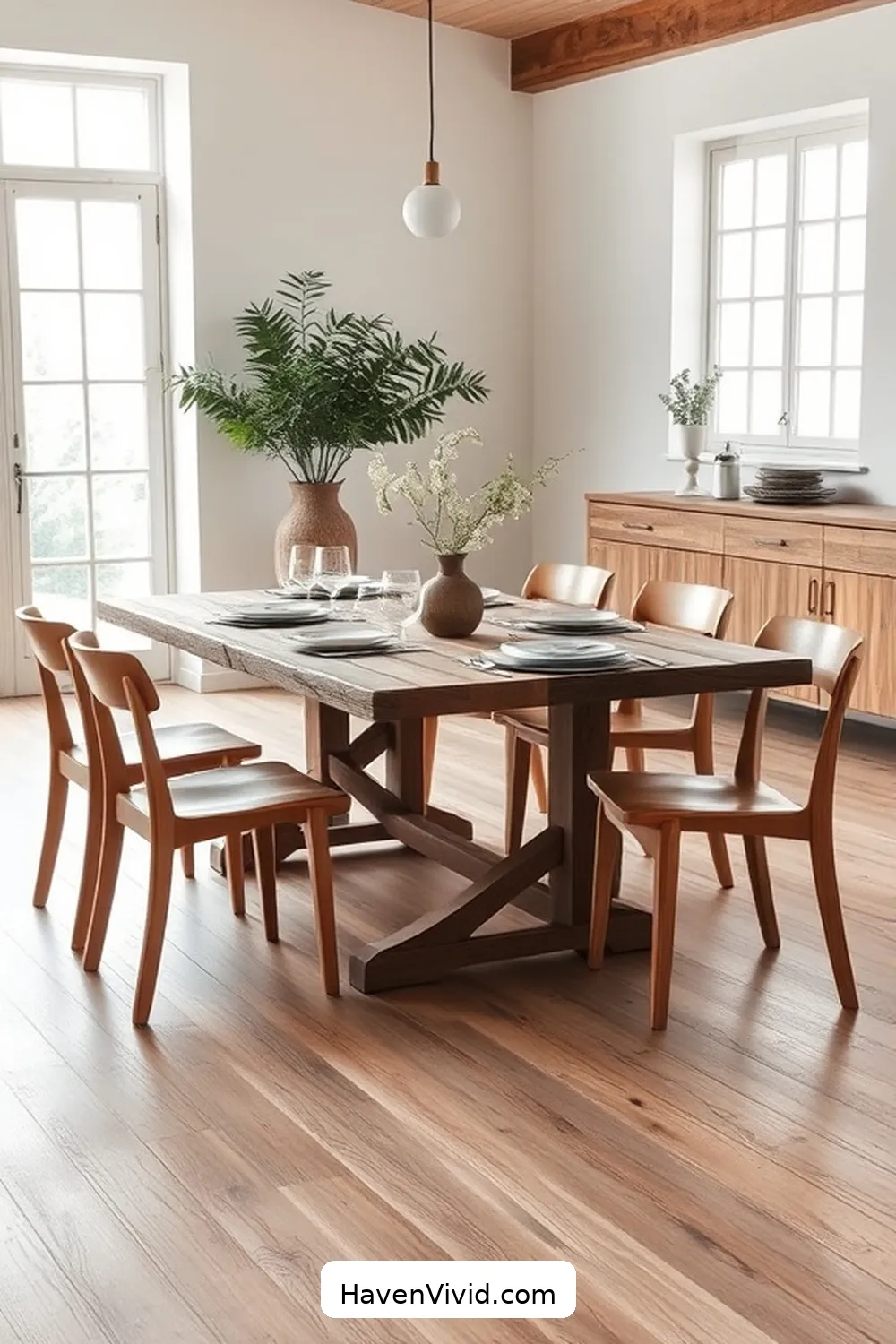
When designing a functional layout for your dining room, it’s important to contemplate how you’ll use the space daily.
Picture yourself sharing meals with family or hosting friends; this vision guides your arrangement. Start by positioning a reclaimed wood table at the center, allowing room for movement around it.
I’ve found that leaving at least three feet of space between the table and walls makes a huge difference for comfort. Consider multifunctional chairs—lightweight yet sturdy—so they can easily be moved as needed.
If you have an open-concept space, use area rugs to define the dining zone.
Finally, remember to keep pathways clear; flow matters. Designing with intention creates a welcoming atmosphere that invites connection and enjoyment.
Step-by-Step Guide to Minimalist Dining Room Decor
Color Palettes for a Minimalist Dining Space
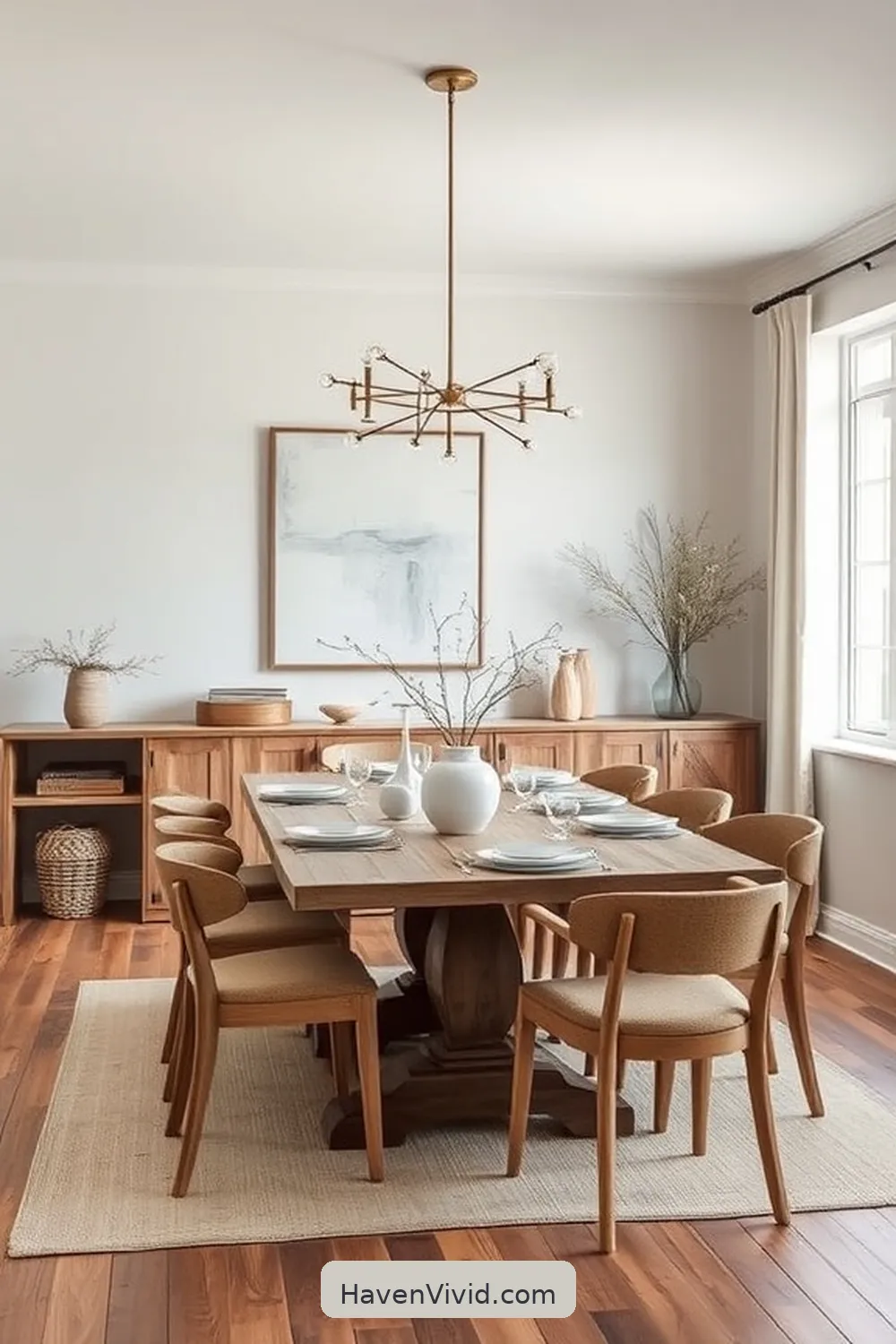
Creating a functional layout naturally leads to pondering the colors that will breathe life into your dining space. Choosing the right palette is essential for achieving a serene, minimalist vibe.
I often lean toward soft, muted tones that promote calmness while still being inviting.
Here are some color ideas to reflect on:
- Whites and Off-Whites: Brighten up the space and create an airy feel.
- Soft Grays: Add sophistication without overwhelming the senses.
- Earthy Beiges: Ground the room with warmth and neutrality.
- Pastel Accents: Introduce subtle pops of color for a cheerful touch.
- Deep Charcoal: Create a dramatic contrast that still feels cozy.
Incorporating Natural Elements
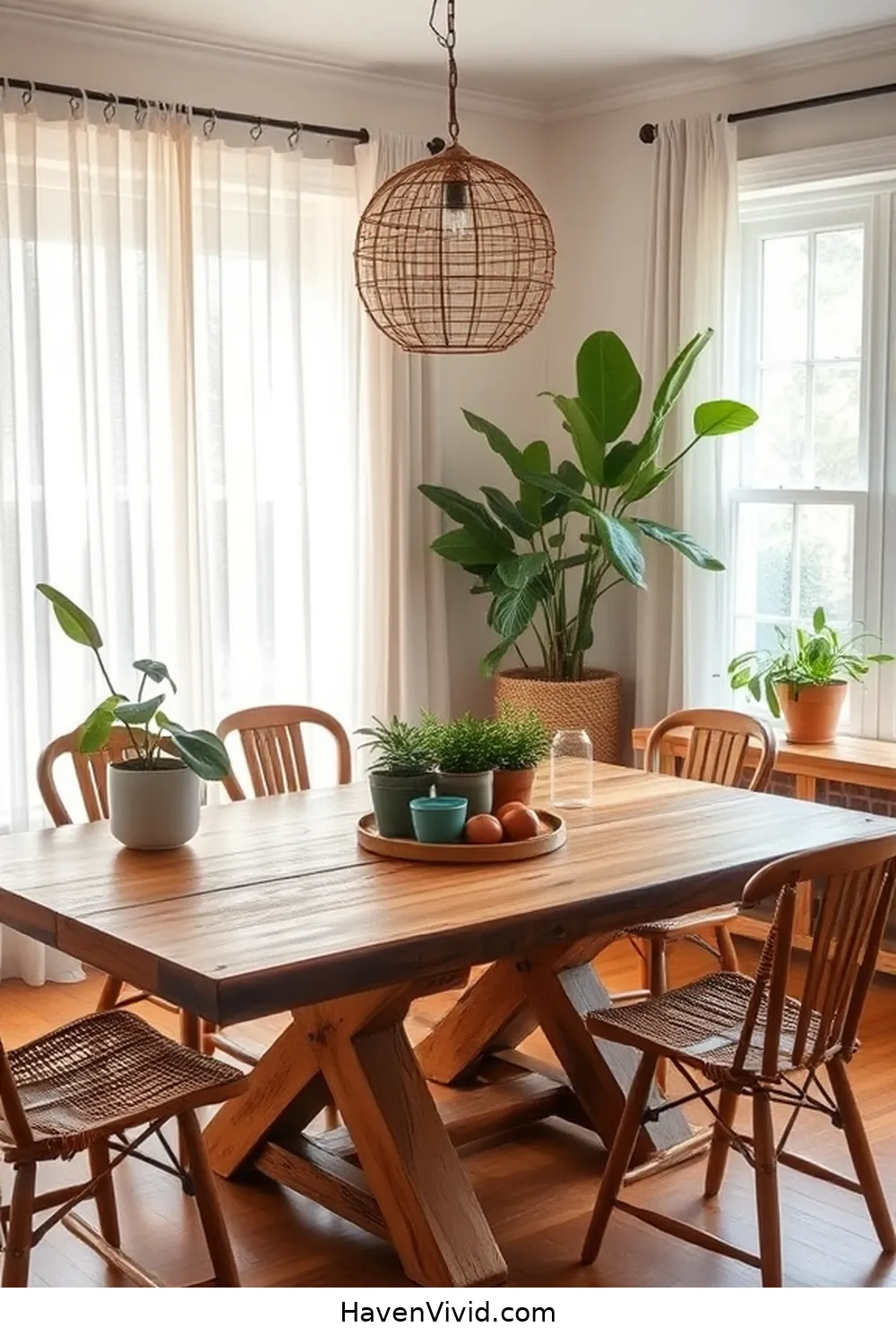
Incorporating natural elements into your minimalist dining room can transform the space into a soothing retreat. I love using reclaimed wood for my dining table; its unique character tells a story. Adding plants infuses life and color, creating a rejuvenating atmosphere.
Here’s a simple visual guide to inspire your choices:
| Element | Description | Impact |
|---|---|---|
| Reclaimed Wood | Rustic table or shelves | Warmth and texture |
| Green Plants | Ferns or succulents | Air purification and calm |
| Natural Fabrics | Linen or cotton tablecloths | Softness and elegance |
Maintenance Tips for Reclaimed Materials
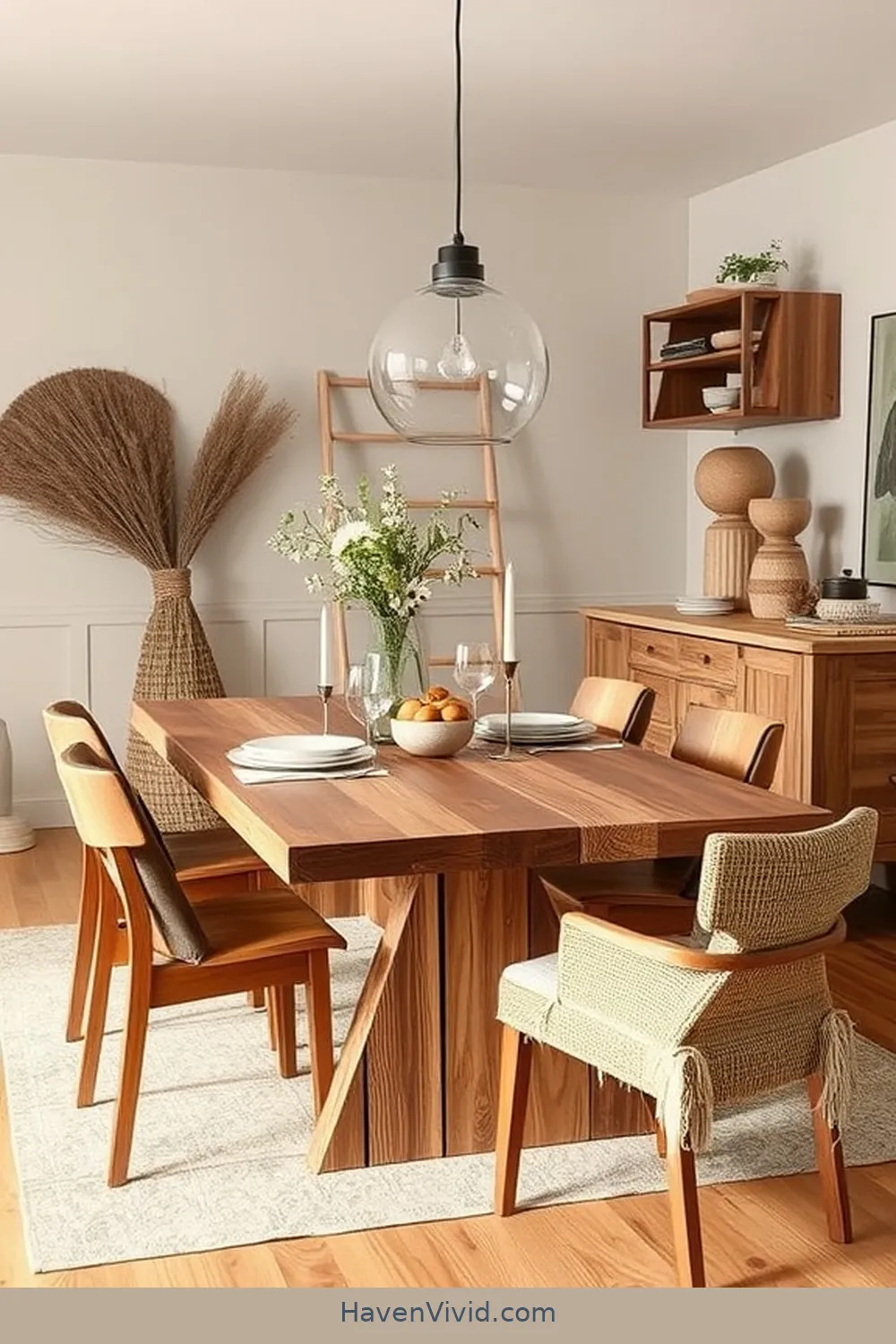
Although reclaimed materials bring unparalleled charm to your dining room, they do require some tender loving care to maintain their beauty.
I’ve learned that a little effort goes a long way in preserving their character. Here are my top maintenance tips:
- Dust regularly: Use a soft cloth to keep surfaces free from dust and dirt.
- Avoid harsh chemicals: Stick to gentle cleaners to protect the finish and integrity of the materials.
- Seal when necessary: Apply a natural finish or sealant to protect against moisture.
- Monitor humidity: Keep the room’s humidity levels stable to prevent warping or cracking.
- Repair promptly: Address any scratches or damage quickly to maintain the piece’s charm.
With these tips, your reclaimed treasures will shine for years to come!











